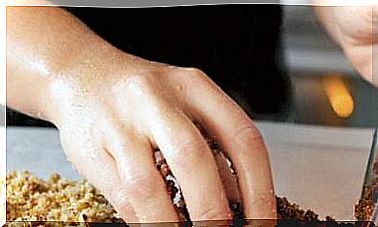Small But Bullies: Allergies To Nuts
Allergy to nuts is one of the most common. Find out what you can do if you have any suspicions.

Among allergies, one of the most common is caused by nuts. Can you be allergic to nuts in general or just to some of them? Do all allergies have similar symptoms? Is it possible to cure allergies to nuts? We will try to clear these doubts.
Is there a general nut allergy?
In most cases the allergy occurs to one or a few nuts. It is an exaggeration to reject them all because they do not belong to the same botanical family and do not share the same allergen.
You do not have an allergy to a specific food but to a molecule, to an allergen that can be found in other foods, in pollens or in latex.
The immune reaction to a nut is one of the most frequent food allergies. The incidence varies depending on age, hereditary or environmental factors (due to increased exposure during childhood, for example). It is estimated that a nut allergy affects one in 100 people.
Almonds and walnuts are the foods that most frequently cause problems in Spain. In France and the United States it is the peanut (although it is not a dried fruit, but a legume).
Cashew and pistachio belong to the same botanical family and are “cross-reactive”. Those allergic to nuts can also be allergic to hazelnuts and almonds. People who react to chestnuts frequently react to bananas, avocados, and latex. There are people allergic to both hazelnut and birch pollen (this causes reactions between March and May).
Aside from allergies, spoiled nuts can contain toxin-producing molds. Those that don’t look good or smell good should be rejected.
The most frequent symptoms
Often the symptoms are intense and immediate. They can appear at the first contact with food during childhood or after years of having consumed it without problems.
The signs of an allergy to nuts can range from itchy mouth or the whole body, with sneezing, runny nose and watery eyes, vomiting, abdominal cramps or diarrhea, until symptoms more intense angioedema and even anaphylactic shock (which may be fatal if it is not acted on time).
The first symptoms can appear in seconds or up to two hours after ingesting the food. In most cases they stay there, but in some they get worse and there may even be shortness of breath. In this case it is important to go to the emergency room as soon as possible.
If you have ever suffered a reaction, it is advisable to take preventive measures by consulting with the allergist about the possibility of taking self-injectable adrenaline, and that family members and caregivers have training to administer it.
It may also be advisable for the allergic person to carry, on a bracelet, bracelet or identification tag, with clear and well visible handwriting, their quality of allergy and what specific food they are.
Can this allergy be prevented and treated?
In the case of atopic children (with a family history of allergy and a tendency to suffer eczema, asthma, rhinitis or other allergy symptoms), it is advisable to delay the introduction of nuts in the diet. In addition, the portions should be moderate and not too frequent.
After the appearance of symptoms, to make a correct diagnosis it is necessary to perform a skin test with extracts of nuts and determine the presence of IgE antibodies in the blood.
Once the allergy has been declared, the only possibility is to exclude the offending food. However, recent studies show that 20% of children with allergies can stop being allergic over the years. That is why it is advisable to do periodic tests to see if the sensitivity has disappeared.
Nuts can be found hidden in many products
Pay special attention to hidden ingredients. Nuts are inadvertently found in baked goods (biscuits, seed breads, and other baked goods). They are sometimes found in the form of a ‘mystery ingredient’, such as ‘hydrolyzed vegetable protein’, found in some cereals.
It is increasingly easy to find nuts in sauces (barbecue, pesto, English sauces or “satay”, based on peanuts, widely used in Asian restaurants), as well as in breakfast cereals, crackers and ice cream.
If you are allergic, you should avoid the causative nuts even among the ingredients of cosmetics and hygiene products. They are capable of causing reactions when they come into contact with the skin.









